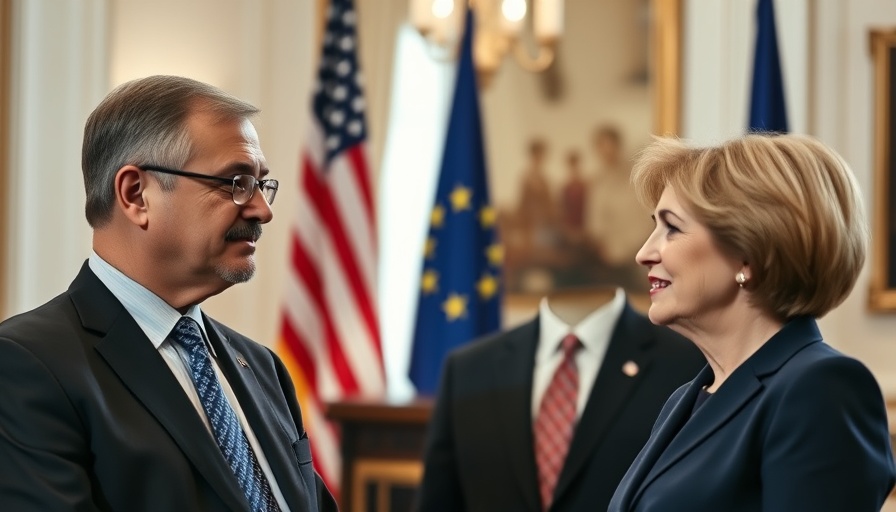
Trade Deal Signals Shift in US-EU Relations
In a significant move that reshapes transatlantic trade, President Donald Trump and European Commission President Ursula von der Leyen have reached an agreement setting a 15% tariff rate on most EU products. This decision comes as a relief, averting a looming increase that threatened to disrupt the markets with a hefty 30% tariff on August 1st. The agreement not only fortifies economic ties between the U.S. and the EU, but also provides a substantial boost to American industry with pledged investments.
Investment Commitments That Make Waves
As part of the new trade terms, the EU has committed to investing $600 billion in the U.S. economy, alongside purchasing $750 billion worth of American energy and defense products. This influx of capital is poised to spark growth in various sectors, particularly in defense and energy, which are pivotal in today’s geopolitical landscape.
Who Benefits from the Deal?
This latest trade agreement appears to favor multiple players in the business arena. Analysts are already highlighting European carmakers as major beneficiaries, with tariffs on autos set to drop from 25% to 15%. Additionally, U.S. stocks in the energy and defense sectors may see a promising upward trend as companies position themselves to take advantage of new contracts stemming from this deal.
Future Implications: A Stabilized Trade Environment
By eliminating the uncertainty surrounding potential trade barriers, this deal is expected to encourage investment initiatives across various industries. Michael Brown, a senior strategist, noted that this agreement signifies a shift towards stable economic relations, moving away from confrontational rhetoric to cooperative engagement, which is particularly vital during these uncertain economic times.
Conclusion: Embrace the New Business Climate
For business professionals, understanding the nuances of this trade deal is crucial. As new opportunities arise within the evolving economic landscape, keen awareness and strategic adaptation will be key to leveraging the benefits of U.S.-EU trade relations. Eyeing the potential for growth and aligning their operations accordingly may well position businesses to thrive in this new climate.
 Add Row
Add Row  Add
Add 



Write A Comment